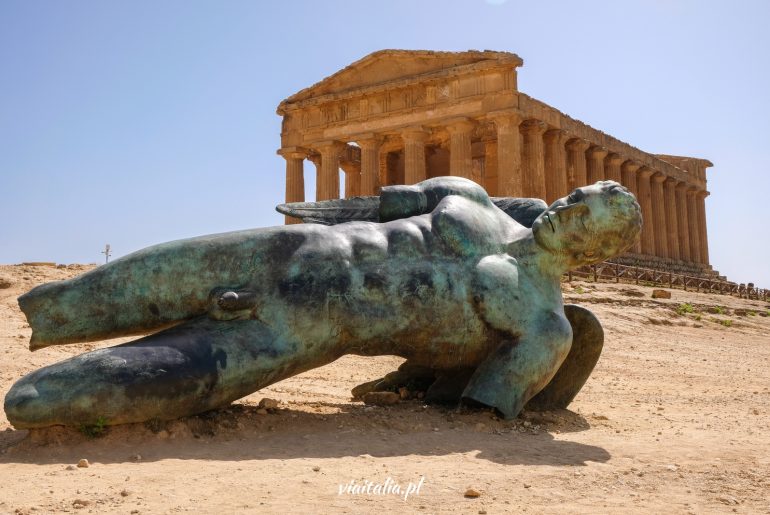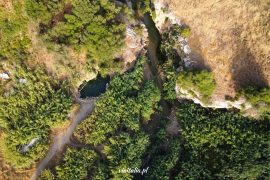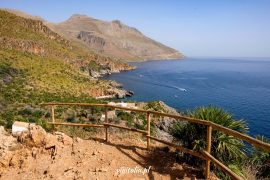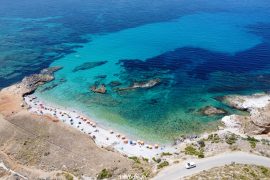On our recent visit to Sicily, we went to the Agrigento area (on the southern part of the island) for two reasons: we wanted to see the Valle dei Templi and the popular Scala dei Turchi beach. Both of these attractions, although completely different, made a great impression on us. You can read about the Scala dei Turchi in the article about the best beaches in Sicily, and today I wanted to introduce you to this other Sicilian attraction: The Valley of the Temples.
Information
The Valley of the Temples is certainly one of the most important archaeological sites in Sicily. It lies on the site of the ancient city of Akragas - described by the Greek poet Pindar as "the most beautiful city inhabited by man." Today, in the Valley of the Temples, we can find well-preserved ruins of five temples and other remains of buildings including a theater, gymnasium, and necropolis. In 1997, the Valle dei Templi was listed as a UNESCO World Heritage Site. The Valley of the Temples is located about 3 km from the city of Agrigento, in southern Sicily.
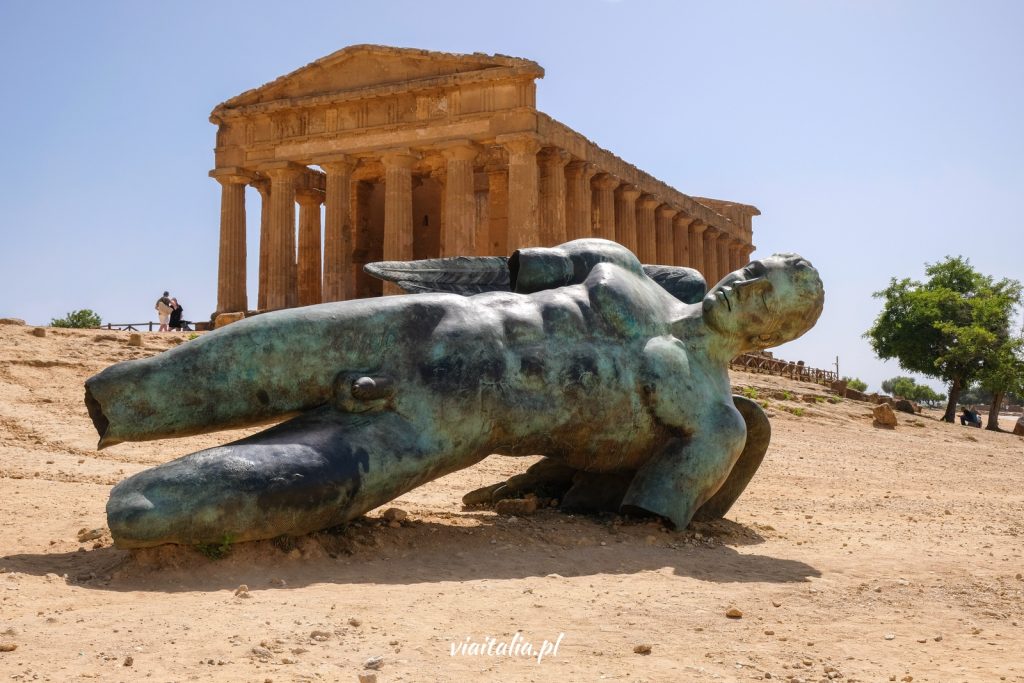
History
City Akragas was founded in 580 BC by Greek colonists from the cities of Gela and Rhodes. The settlement was established on a plateau, near the coast and the fishing village of San Leone. From the middle of the 4th century, the city grew intensively, and in the 5th century BC, under the rule of tyrants Falarisa i Terona It reached the apogee of its prosperity, power and wealth. During its heyday, Akragas captured a third of Sicily's territory. It developed from a small settlement into a city-state with a population of about 200,000.
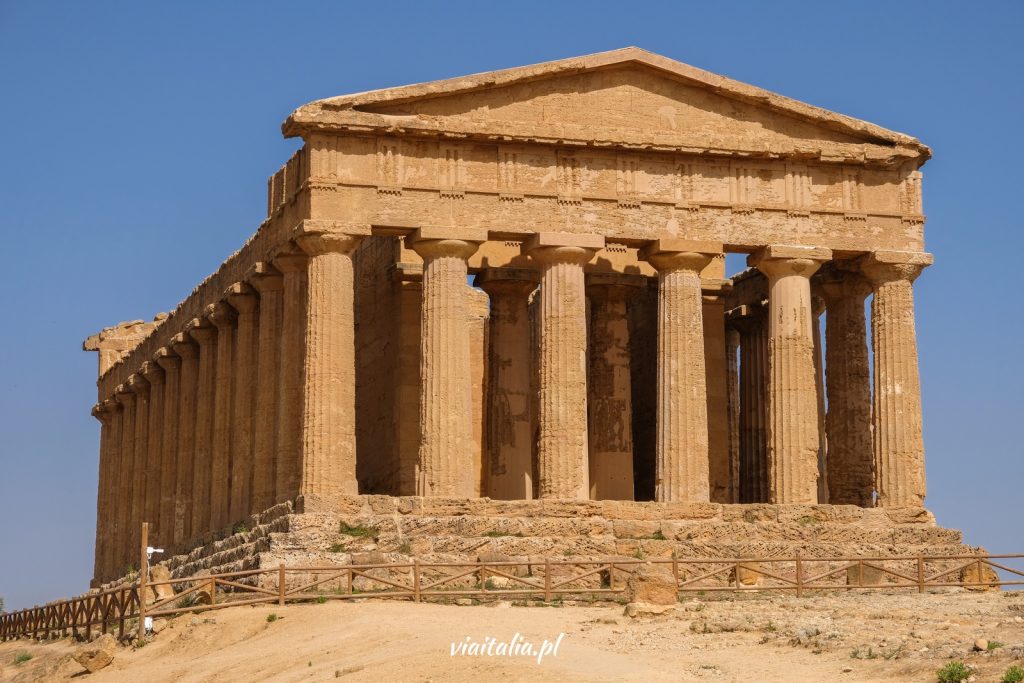
In 480 BC. Teron, along with the tyrant of Syracuse, defeated in a the battle of Himera Carthaginians. 7 years later, after the death of Teron, power was assumed by his son Trazydeos. However, he was quickly exiled by the city's residents, who were introducing democracy to the city.
Several decades later, the city was captured and destroyed by the Carthaginians. It did not return to its glory days until it was rebuilt by the Timoleon. Akragas, however, was further destroyed during the two Punic wars Between the Roman Republic and Carthage. The Carthaginians ruled over the city until 210 BC, when the Romans captured it during the Second Punic War. The city changed its name at this time from Akragas to Agrigentum.
During the Roman era, the city underwent renewed reconstruction, as well as rebuilding. New public buildings such as a theater and temples were erected. After the fall of the Roman Empire, the city began to succumb to barbarian invasions, but eventually the city was ruled by the Byzantine Empire.
In the 9th century, the city was captured by the Arabians, who were expanding their influence in Europe. Then, in the 11th century, Sicily was overrun by the Normans, who captured the city and renamed it again, this time to Girgenti. It wasn't until 1927 that Mussolini renamed it to the name still known today: Agrigento.
If you are looking for more information about the history of this place, I highly recommend checking out the article on the Google Arts&Culture site, which you will find here.
Tour of the Valley of Temples
To visit the Valley of the Temples in Sicily, it is worth setting aside a minimum of 2-3 hours. We were there at the end of June and the temperatures were already making their presence felt. So if you are going there during the holiday season, don't forget to take with you enough water, a hat or cap and UV filter.
You can visit on your own or with a guide. It is also possible to rent an audio guide, which unfortunately is not in Polish. The cost of such a rental for the duration of the tour is 5€. At the ticket offices you can also purchase a map of the entire Temple Valley park for an additional fee (it was probably 1€). You can also download free app for Android and iOS, which will facilitate the tour.
The temples themselves are located on a single trail, in the southern part of the Valley of Temples. Although the name "valley" doesn't quite fit here - the temples actually lie on a hill. To the north of the trail with the temples lie other sites, such as the aforementioned necropolises, theater, gate, city walls and shrines.
Temples
The biggest attraction of the site is the five temples designed in the Doric style. The temples were built of local limestone of intense yellow color. I have described the temples in the order of their visit.
Temple of Juno (Hera)
The Temple of Juno (Hera) is one of the two best-preserved temples in the Valle dei Templi. Interestingly, like most temples in the Valley of Temples, it is impossible to distinguish to which god it was attributed. In this case, the Temple of Juno was incorrectly attributed to Hera - this was due to a misinterpretation of Pliny the Elder's Latin text. She is the first temple we encounter in the archaeological park. The Temple of Juno was built at the eastern end of the Collina dei Templi (Hill of Temples). It dates to 450-440 BC.
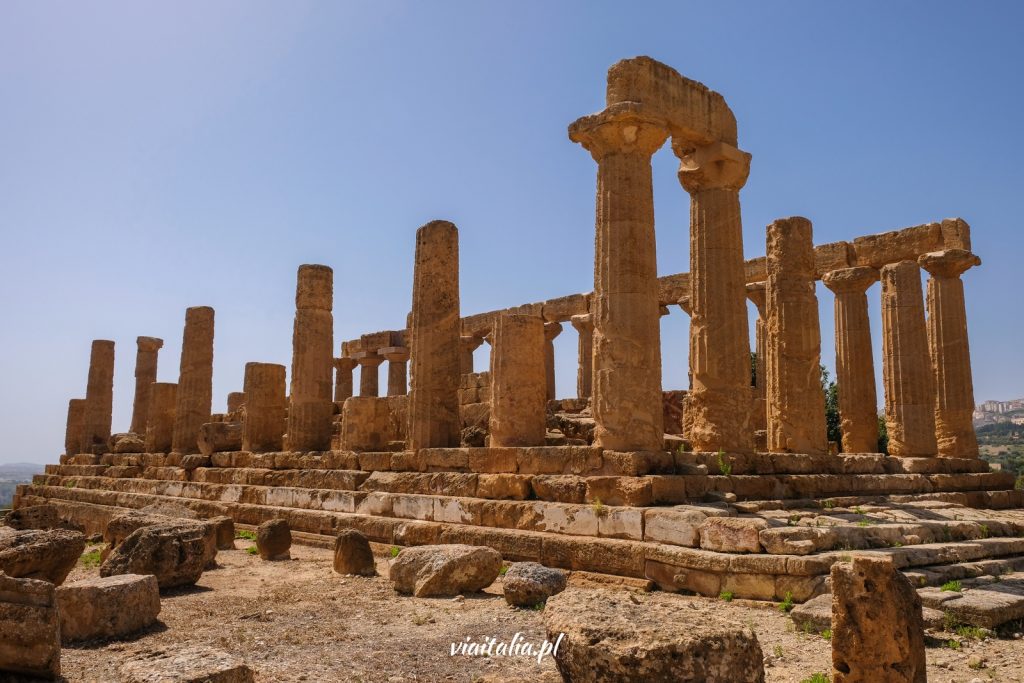
The base of the temple of Hera is the four-stage crepidoma (the lowest visible part of the temple which is also part of the foundation). The structure has 6 columns on the front and back, as well as 13 columns on the sides. The center of the temple was divided into 3 rooms: a porch (pronaos), the central part (cella) and the room at the end (opisthodomos). On the walls in the central part (cella) there was a staircase leading to the roof. On the east side of the temple are the remains of a monumental altar preceded by ten steps that led to the place where sacrifices were offered.
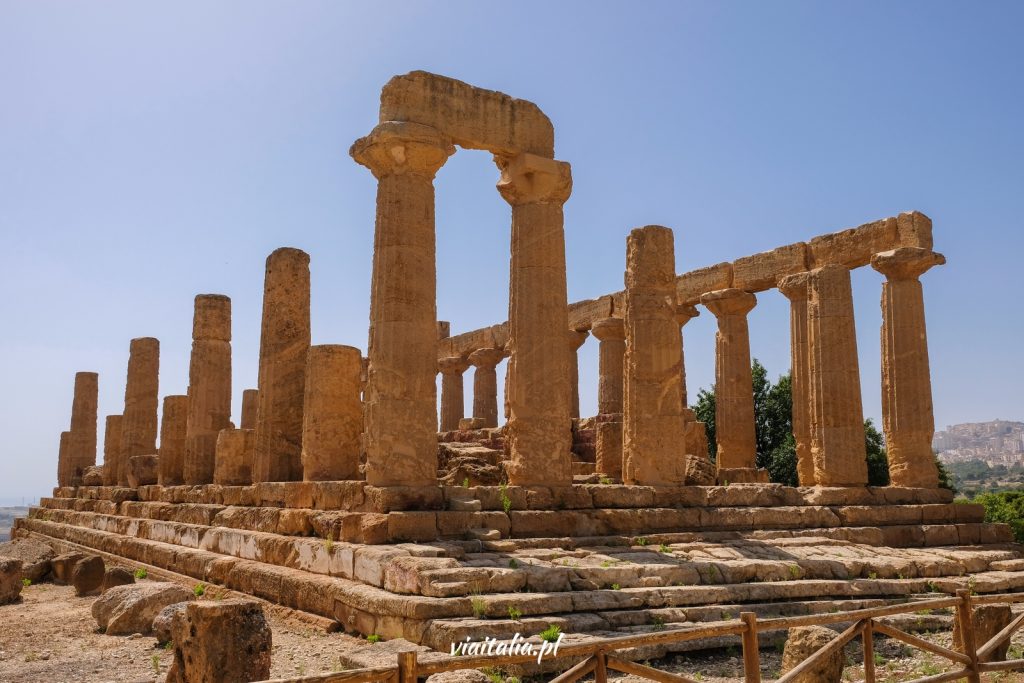
It is possible that the Temple of Juno was destroyed during the Carthaginian invasion in 406 BC. It was probably consumed by fires, as evidenced by the damage visible in the central section (cella). The temple has been restored several times starting in the 18th century, when the columns on the north side were re-erected. The most recent work was undertaken under the aegis of the archaeological park authority and was aimed at securing the stability of the structure and restoring its stone blocks.
Concordia Temple
It is the best-preserved temple in the entire Valley of Temples. Tempio della Concordia (translated as Temple of Concord) owes its name to a Latin inscription with a dedication to "the harmony of the people of Agrigento" located in its vicinity, though not associated with it. The building dates to 440-430 BC. Like the Temple of Hera, it has 6 columns on the front and back and 13 on the sides. The base of the temple is a 4-stage crepidoma. The Temple of Concordia was also divided into 3 parts: pronaos, cella i opisthodomos. The temple was covered with white plaster (stucco) with polychrome decorations both outside and inside. Twelve arches on the walls celli and tombs in the floor are relics of the temple's transformation into a Christian basilica. The temple owes such a well-preserved condition to these later modifications.
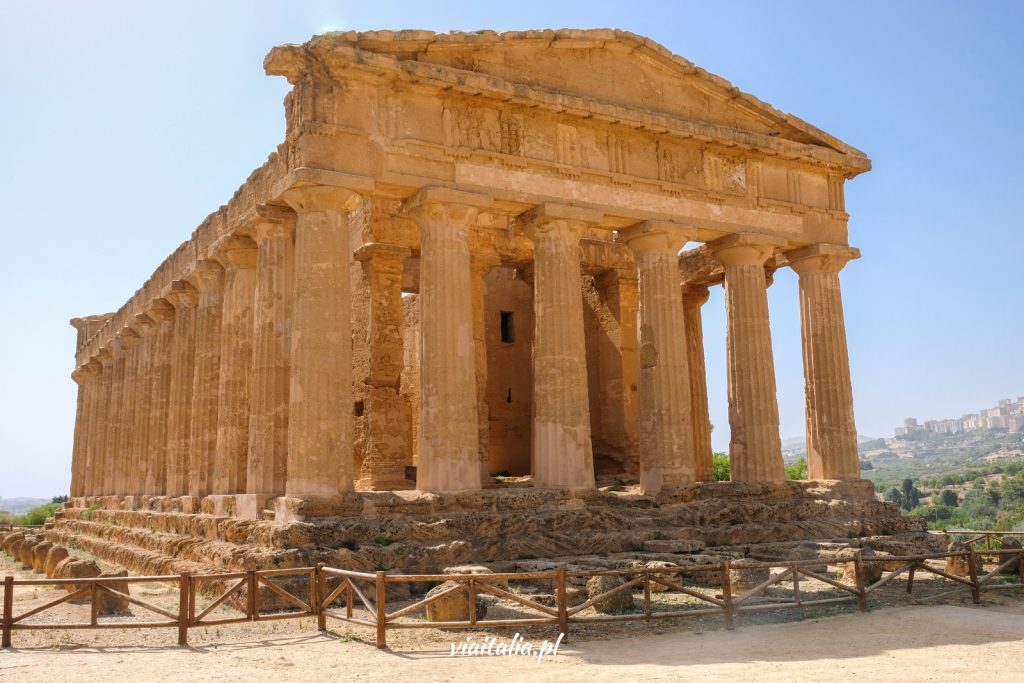
Around the end of the 6th century, Bishop Gregorius sat in the temple and consecrated it to Saints Peter and Paul, thereby driving the pagan demons Eber and Rapsa out of the building. The dedication of the temple was considered evidence of the original attribution of the temple to Castor and Pollux. However, due to the lack of conclusive evidence, it is not fully known in honor of which god the temple was originally built.
On the spur, to the west of the temple, was a Paleo-Christian necropolis (dated to the 3rd to 6th centuries) associated with the conversion of the building into a basilica and encompassing an extensive area with graves and urban catacombs.
Restoration work undertaken since 1788 was aimed at removing the Catholic Church building so as to restore the structure to its original shape. Contemporary restoration work was aimed at securing the stability of the Temple della Concordia and preserving its stone blocks.
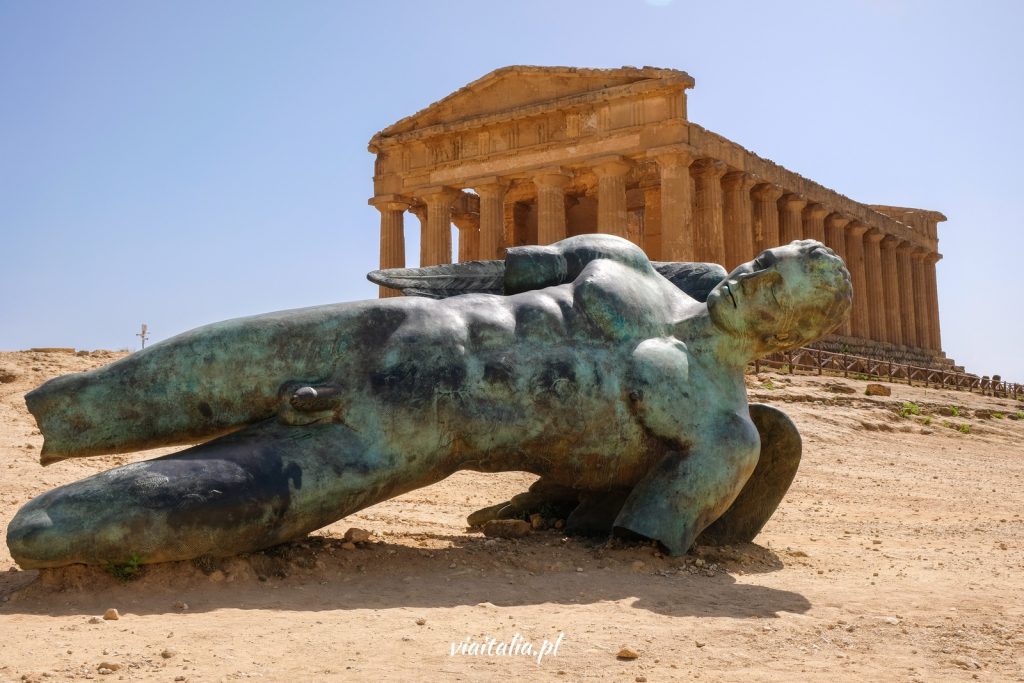
In front of the temple lies the characteristic sculpture "Icarus" by Igor Mitoraj.
Temple of Heracles
It is the oldest temple in Agrigento, dating back to the late 6th century BC. The Temple of Heracles was attributed to the divine hero Heracles based on the reliable testimony of Cicero.
The Temple of Heracles rests on a 3-stepped pedestal (krepidoma) and has 6 columns on the front and back and 15 on the sides. This temple was also divided into 3 rooms: pronaos, cella i opisthodomos. To the east of the temple are the remains of a monumental altar. During the Roman period cella was divided into three parts, probably because the cult of Heracles was associated with the worship of two other deities. One of them may have been Asklepios, whose statue was found in a modified celli.
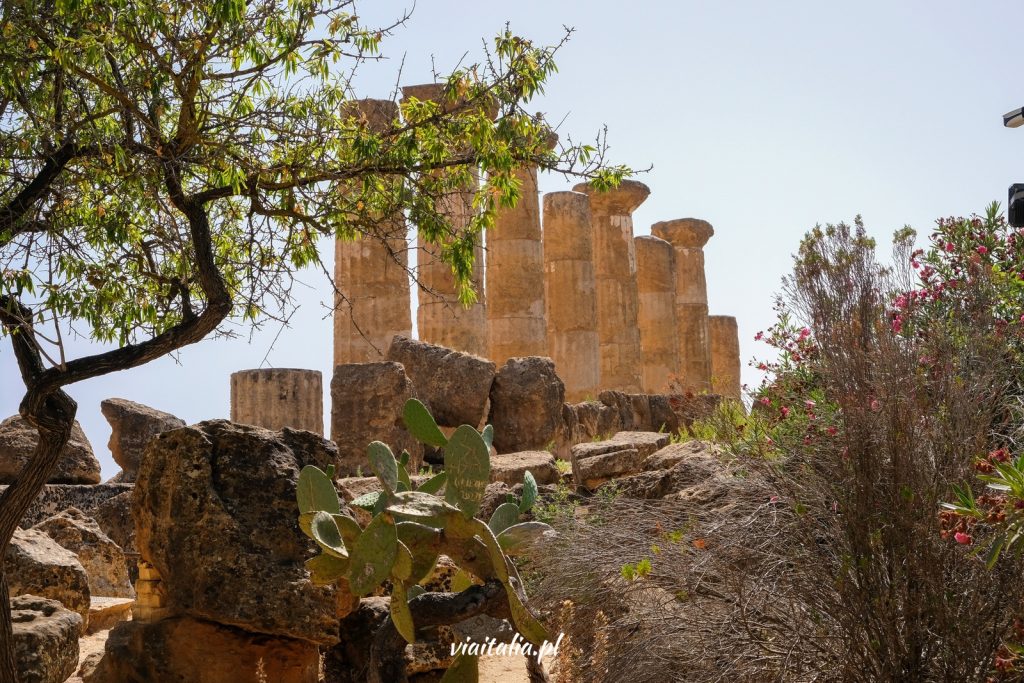
Numerous restoration works have taken place since 1921, when, at the initiative of English Captain Alexander Hardcastle, eight columns were re-erected on the south side of the temple. Today, these columns are the very remains of the Temple of Heracles.
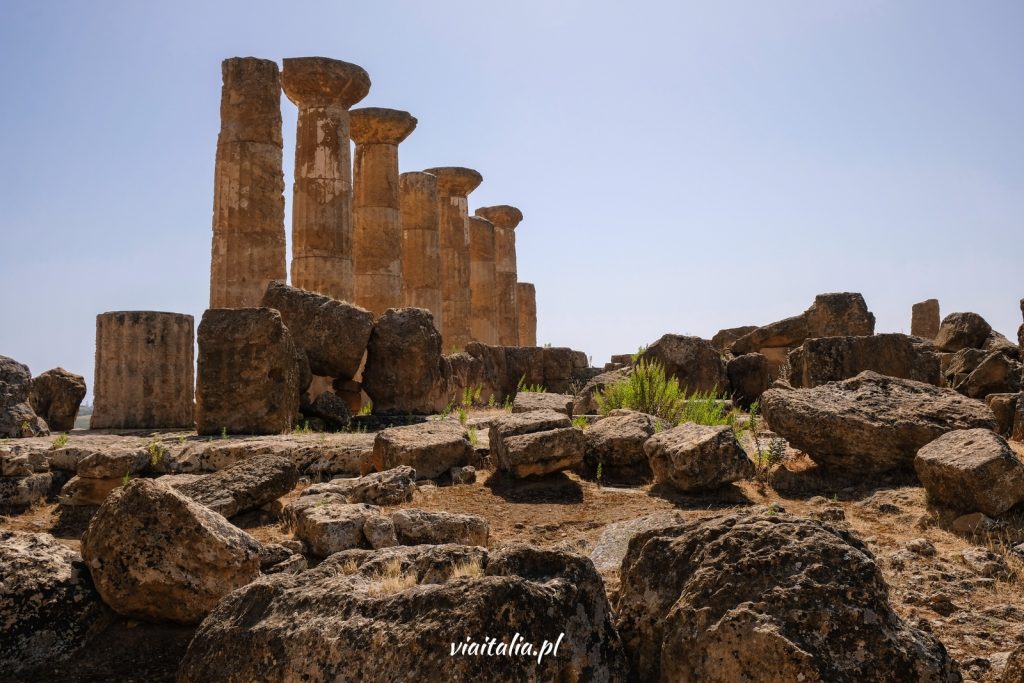
Temple of Zeus of Olympia
The Temple of Zeus is one of the few buildings in the Valley of the Temples where we are certain who it was attributed to. The building is mentioned in ancient texts. It was the largest Doric temple in the western Greek world. Polybius (2nd century BC) refers to the temple in his historical text and says it was not completed. A later account by Diodorus Siculus (1st century BC) describes the temple in detail. Unfortunately, only fragments of the temple and its base remain today.
This description is problematic in part because it suggests that the temple was completed in 480 BC, after the victorious battle over the Carthaginians at Himera. Recent archaeological studies have shown that the temple plan differs from that of the temple of Athena in Syracuse and the temple at Himera, which were built after the peace treaty (480 BC). It is therefore likely that temple planning and construction began earlier, probably at the beginning of Teron's tyranny (488-472 BC).
The ruins visible today are the sum total of the destruction done in ancient and modern times. In the 18th century, for example, the ruins of the temple were used as a quarry for the construction of the port of Porto Empedode (1749-1763).
The temple was built on an impressive rectangular platform with a 5-step crepidome. The last of these steps was twice as high as the others, creating a kind of podium for the temple and raising it above the surrounding buildings. The building had 7 columns each at the front and back and 14 at the sides. It was also divided into 3 rooms: pronaos, cella i opisthodomos.
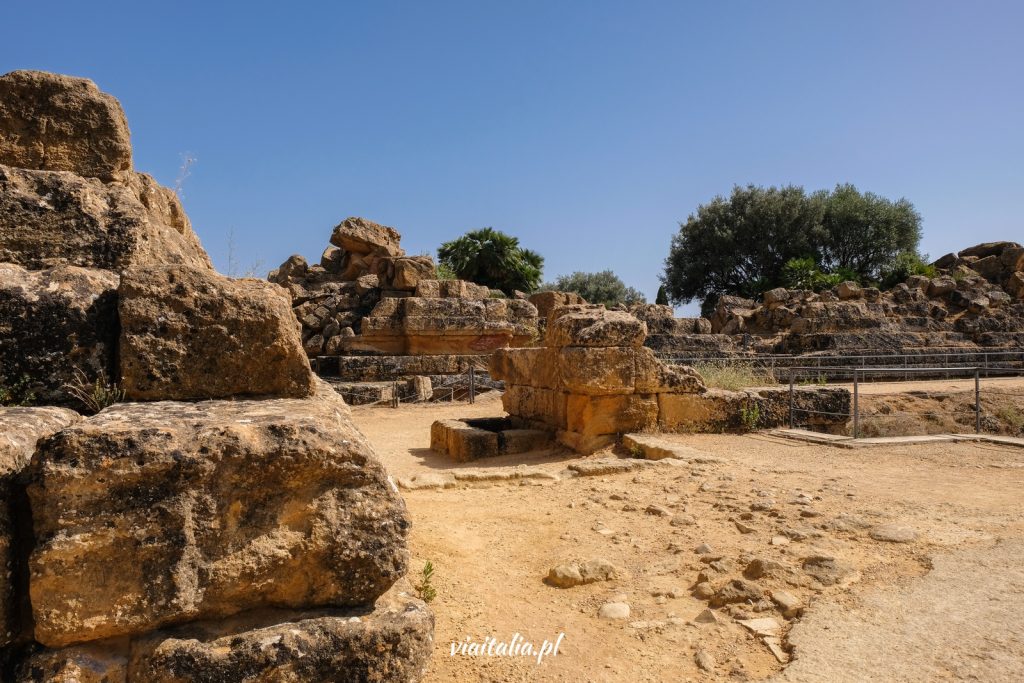
Some of the most peculiar features of the temple are the columns about 8 meters high that supported the beam, which are shaped like colossal mythological figures. These figures have often been interpreted as representing the defeated Carthaginian "barbarians." Since the early 19th century, much excavation and research has been undertaken to restore the temple's original appearance. The latest project was funded by the European Union and entrusted by the Park Authority to the German Archaeological Institute (Deutsches Archaologisches Institut) w Rome.
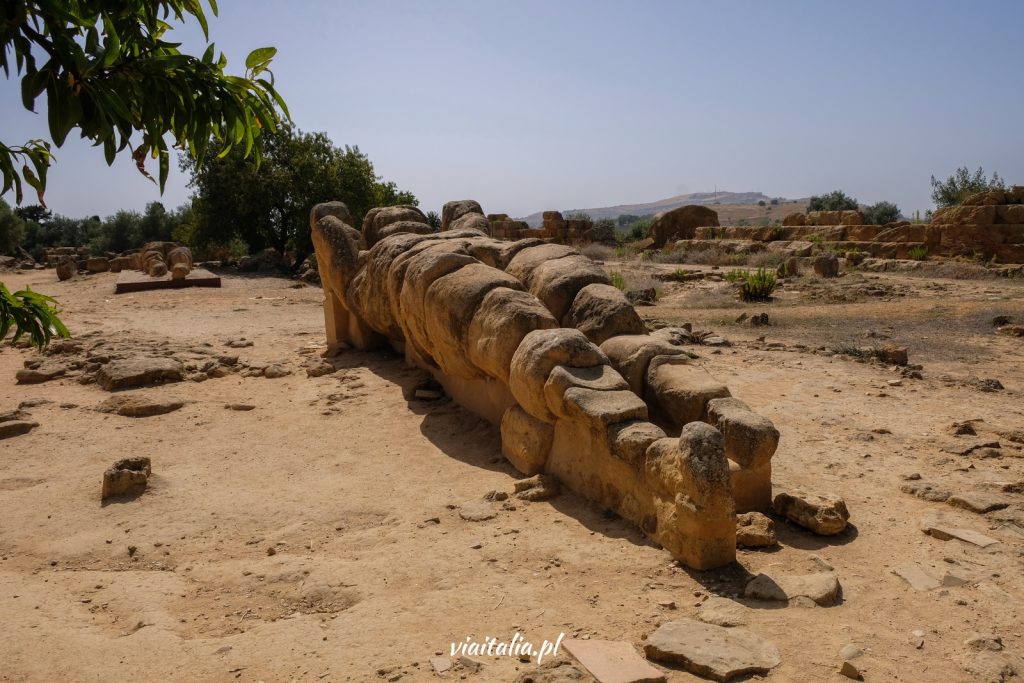
Temple of Castor and Pollux (Tempio dei Dioscuri)
The accepted name of the Temple: Castor and Pollux is conventional, and derives from the poet Pindar's mention of these twin gods (dioscurs) in reference to Akragas. In fact, it is more likely that the temple was dedicated to Demeter and Persephone - the gods to whom the entire area is dedicated. Construction of the temple is dated to 480-460 BC.
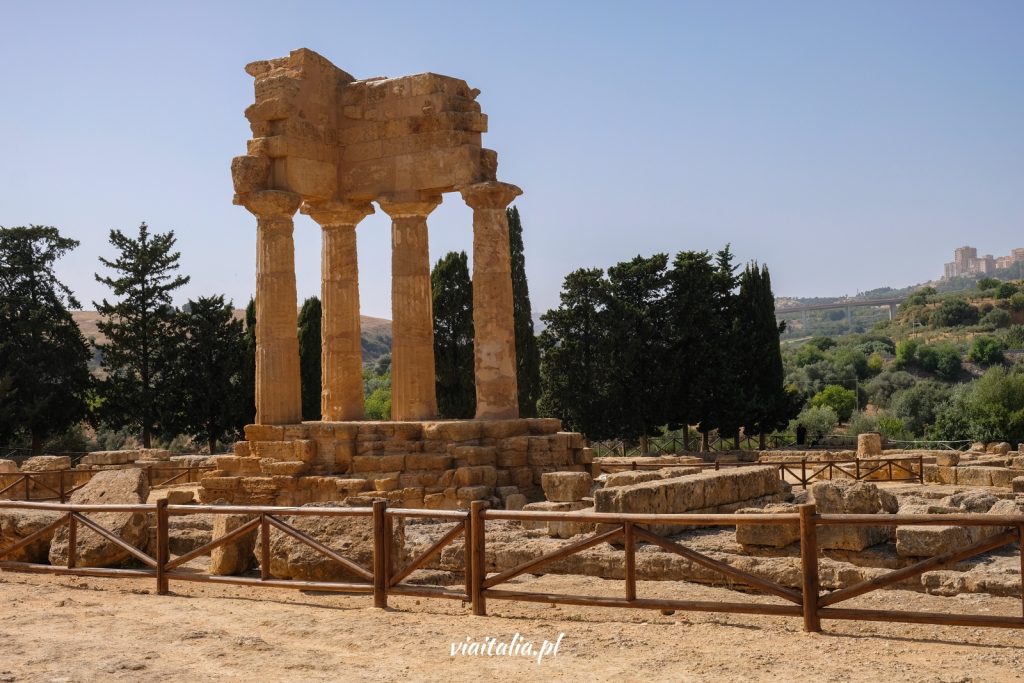
Demeter and Persephone, respectively mother and daughter, patronesses of nature and fertility of mankind, were called chthonic or earthly deities by the Greeks. Their worship was so widespread in Sicily that ancient authors described the island as "Zeus' wedding gift to Persephone" and Akragas as "the land of Persephone." In the western part of the Collina dei Templi (Hills of the Temples) there was an extensive area dedicated to these deities.
The Temple of Castor and Pollux gained its current appearance in 1836, when it was restored. It originally had a similar appearance to other temples in the Valley of Temples. It had 6 columns on the front and back and 13 columns on the sides.
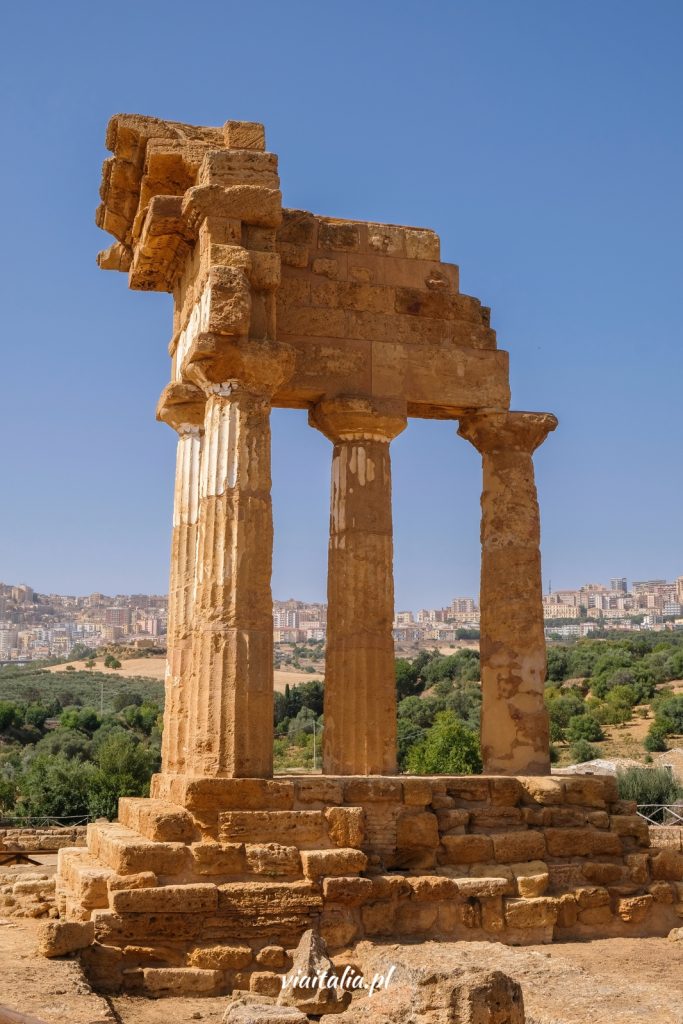
What else to see?
In addition to the temples themselves, there are other sites worth seeing in the Valley of Temples. The entire list and a map are available on the park's official website here. As I mentioned, you can also purchase a paper map right next to the ticket offices. It's worth a trip to the archaeological museum, where you can see artifacts found in the Valley of the Temples. You can also go to the Kolymbetra Botanical Garden. Entrance is unfortunately an additional fee and costs €5.
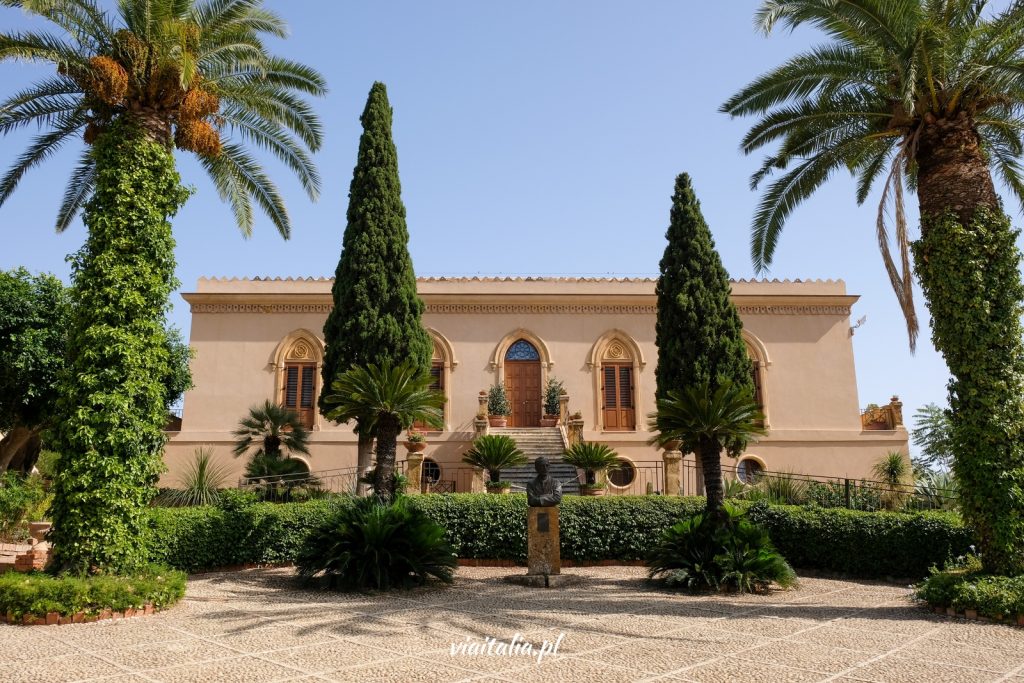
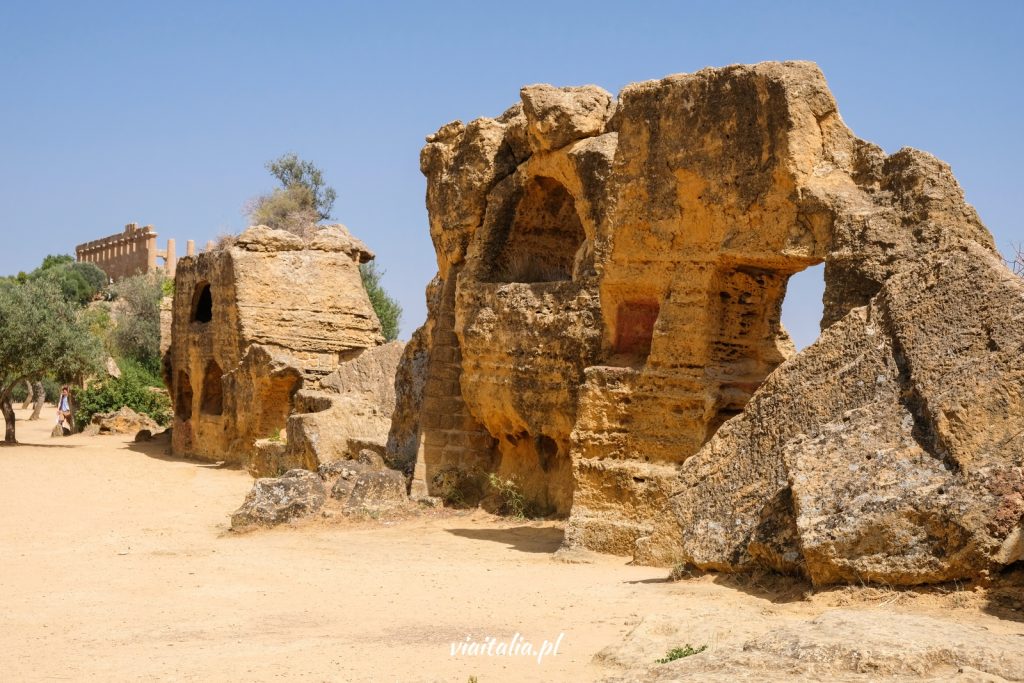
While in the area of the Valley of the Temples in Agrigento, a must-see is the Scala dei Turchi beach, or the famous white cliffs. You can read more about the Turchi Steps in our An article about the best beaches in Sicily.
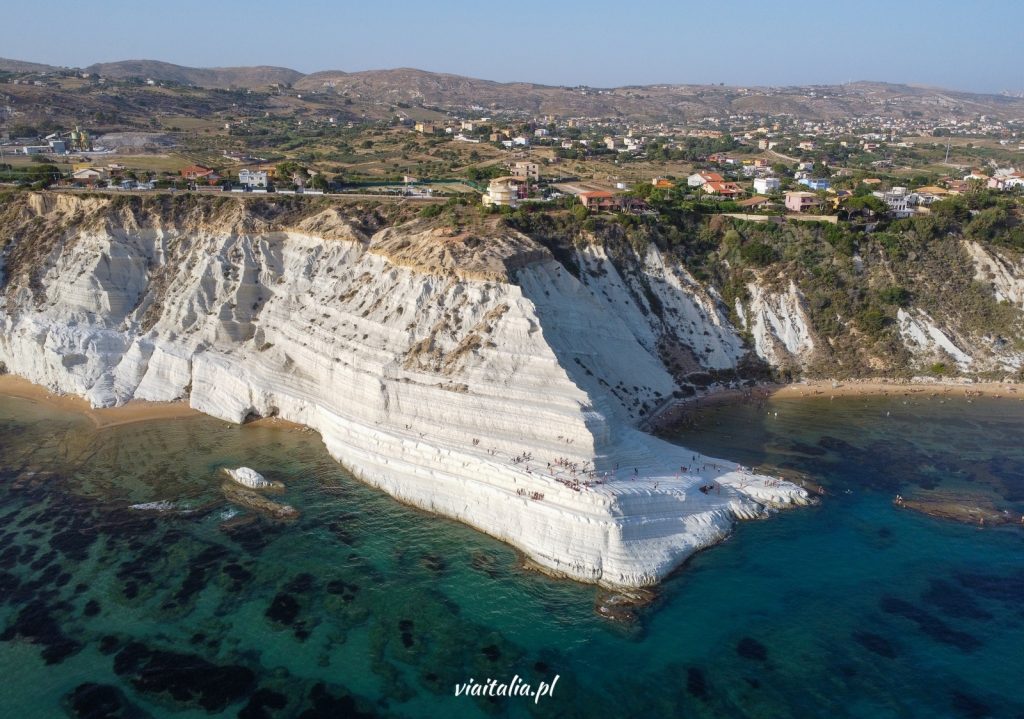
Tickets and opening hours
A normal ticket to visit the Valley of Temples alone costs 10€ (concession 5€). A combined ticket for archaeological sites + museum costs €13.50 (discounted €7) , and a combined ticket for archaeological sites + Kolymbetra gardens costs €15 (discounted €9).
The Valley of Temples is open to the public daily from 8:30 a.m. to 11 p.m., and until midnight on weekends. Ticket offices open one hour before closing. For more information, visit the park's official website here.
There is a large paid parking lot available to the public.

